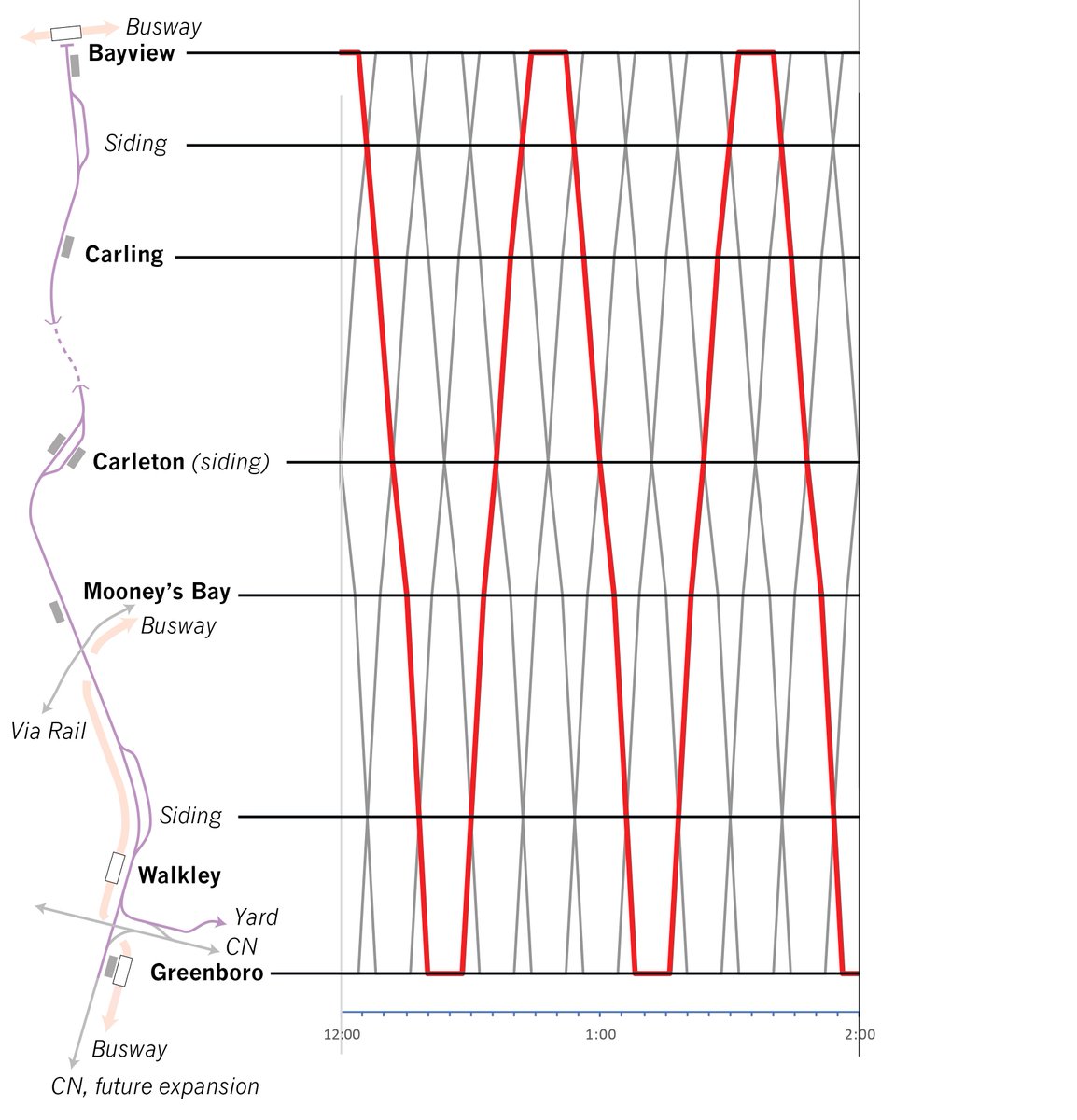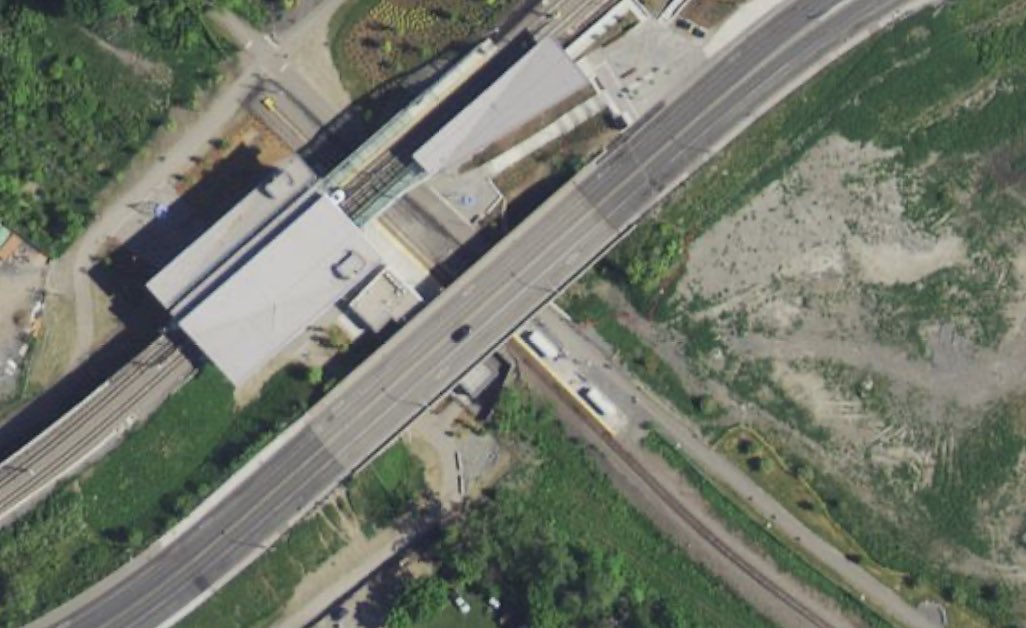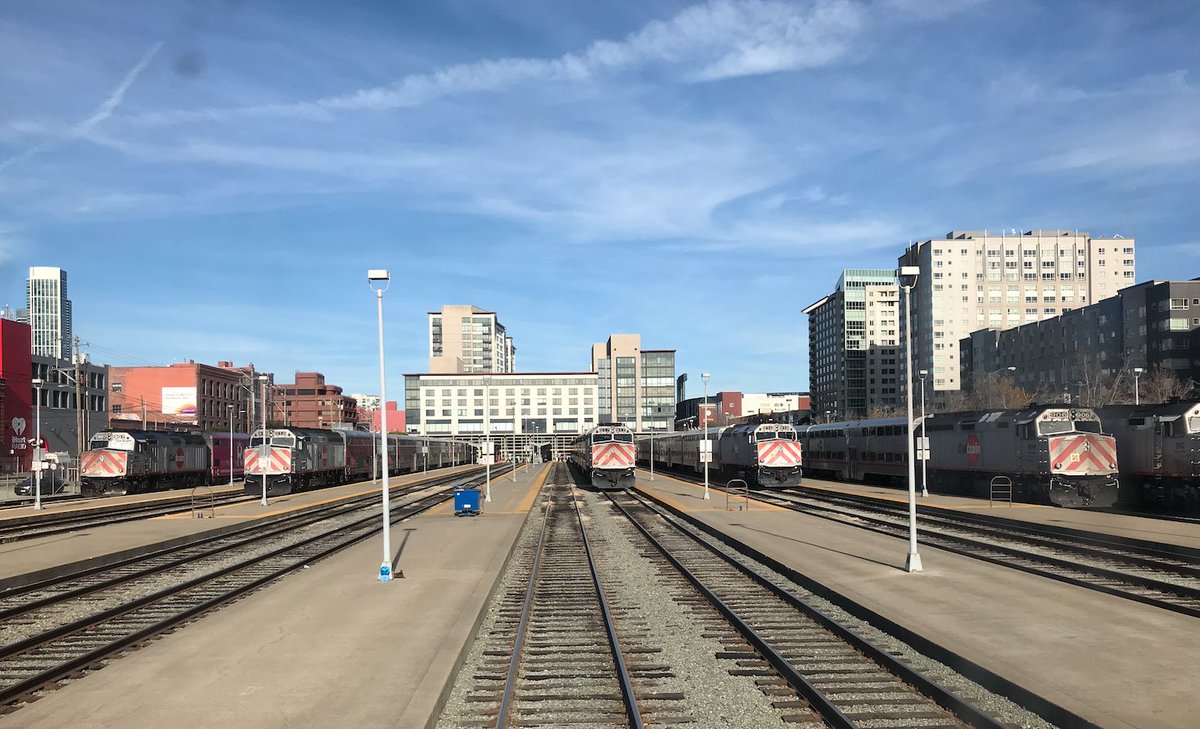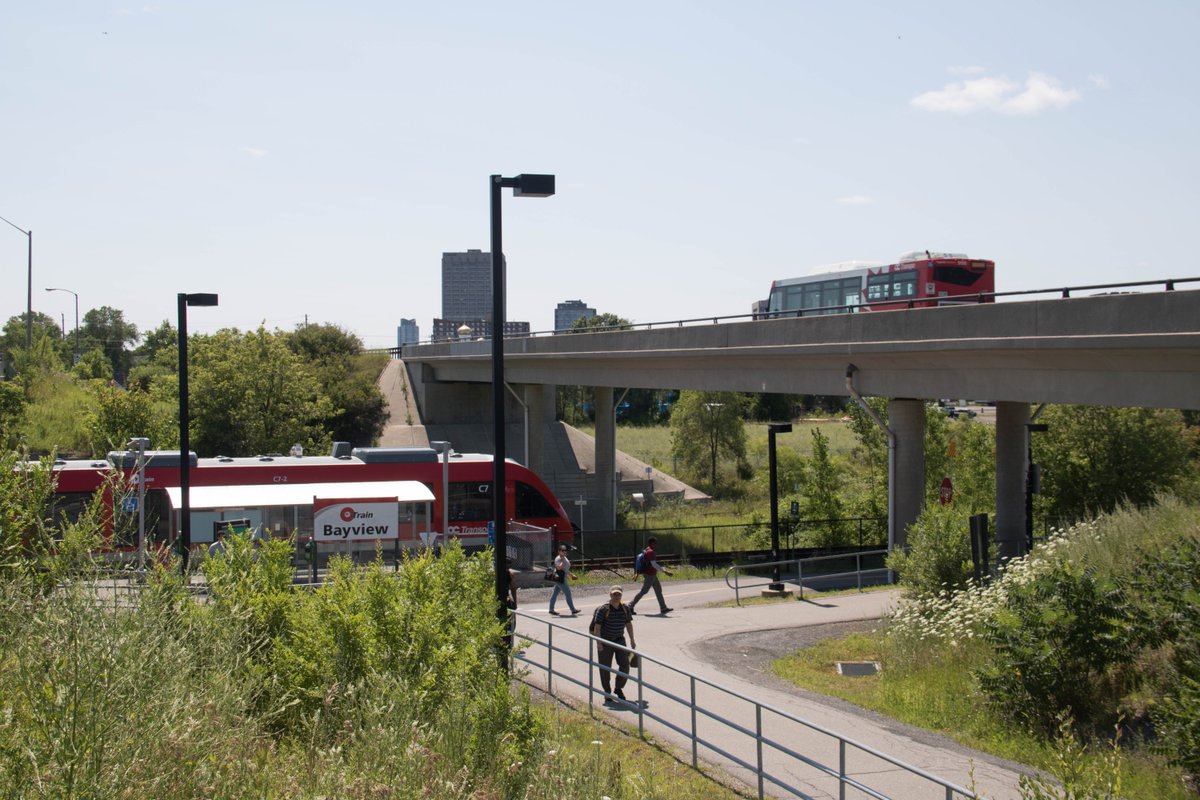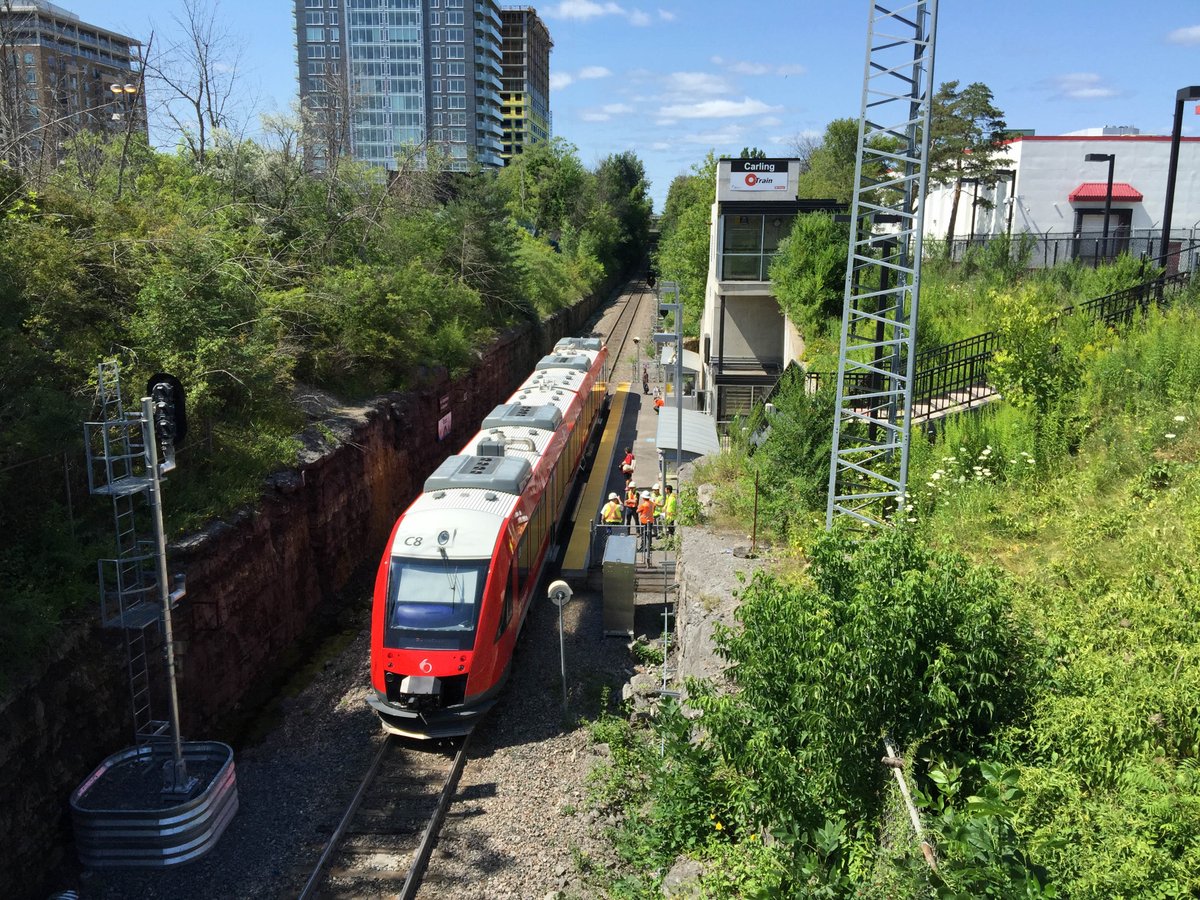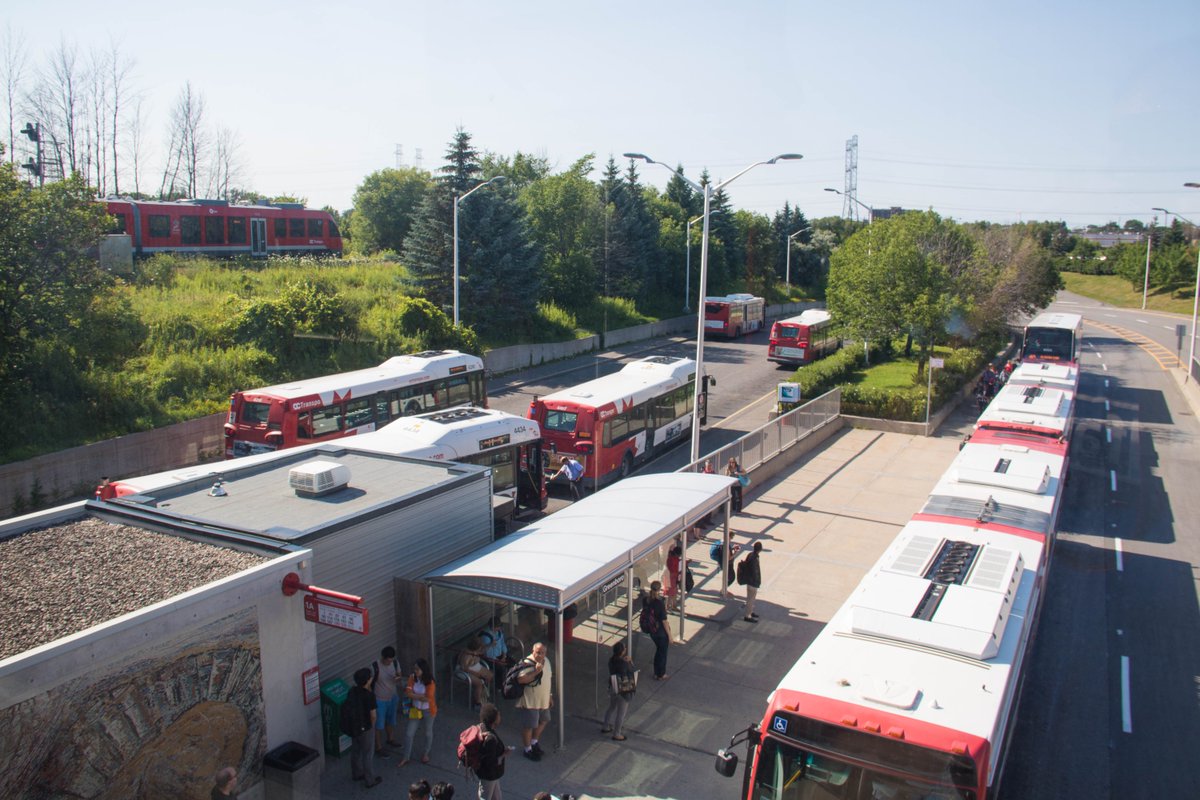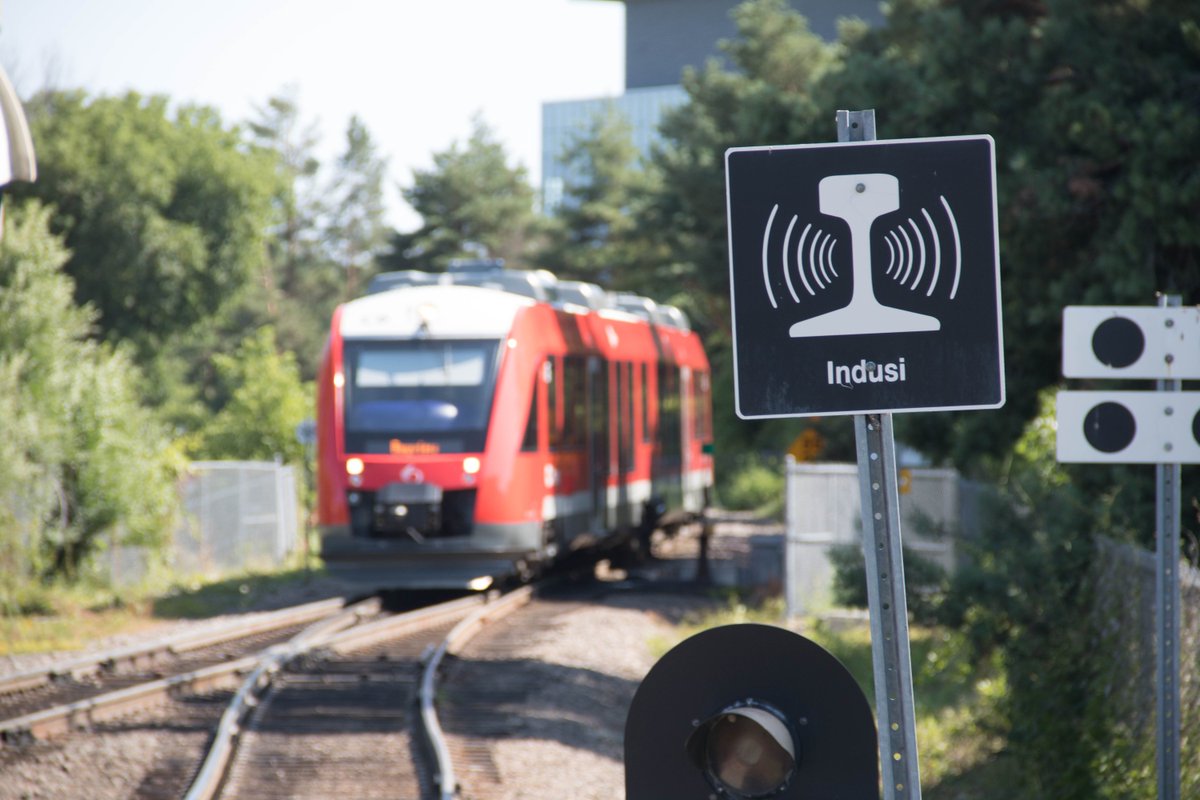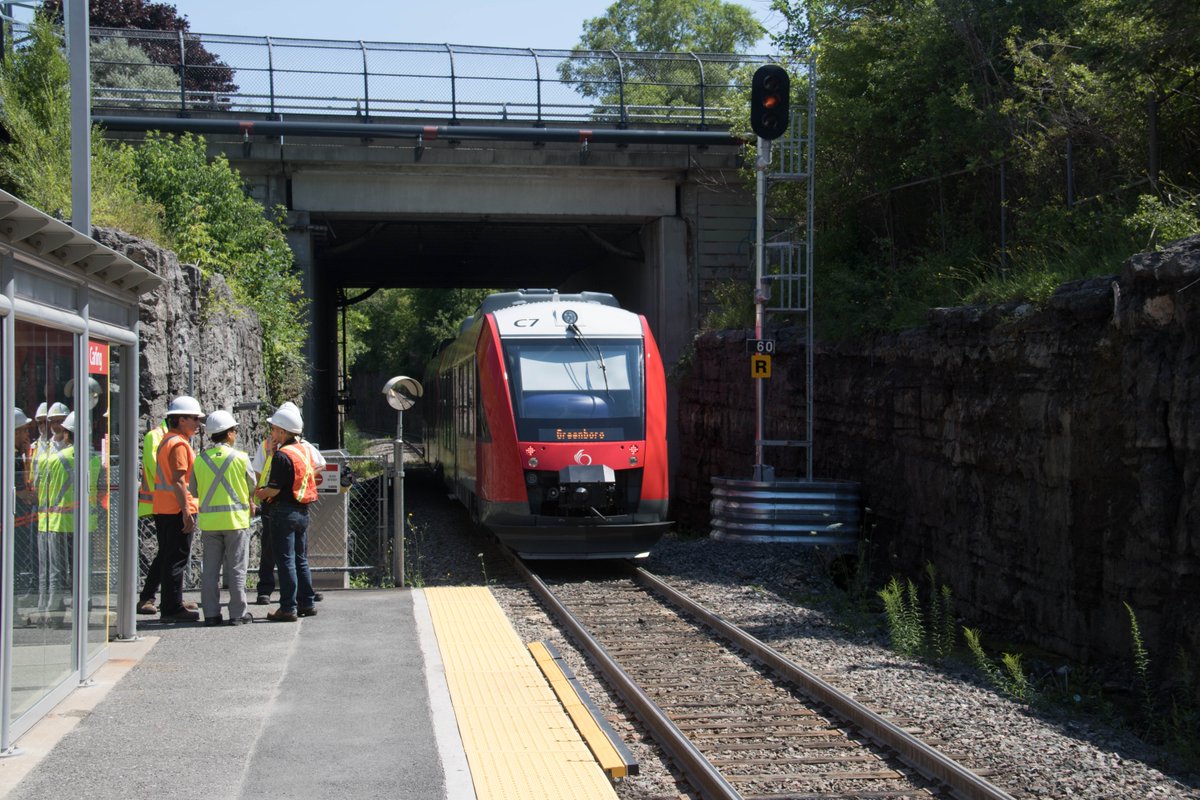My latest transit mapping: how Ottawa operates the most frequent commuter rail service in North America on a single track line. This is O-Train line 2, the Trillium Line.
Here’s the end of the line at Bayview station, with a connection to light rail (once busway), and a single station track.
There are more trains a day through here than through San Francisco& #39;s Caltrain station, which has 12 times as many tracks.
As a train pulled in, you’d see the passengers get off and the operator leave her cab and switch ends. 8 minutes after arriving the train pulls out in the opposite direction, 4 minutes after that, the next train pulls in, then leaves after another 8 minutes. A train every 12 min.
Let& #39;s follow that train. Just after leaving it reaches a passing siding, a short section of double track. It meets the next train. This isn& #39;t the “wait in a cornfield and hope you move again sometime” you may have experienced on Amtrak -- the two are precisely scheduled to meet.
The next station -- Carling -- is only 4 minutes after Bayview. The meet took place within that time.
After that, Carleton, the only double track station on the line, and the midpoint. 8 minutes after Bayview, you’re passing another train here. (This station is in the middle of the university campus.)
Mooney& #39;s Bay is another single track station, and after that, another passing siding, where you meet another train. And then, 16 minutes after Bayview, you pull into Greenboro, the final stop.
In that trip, you& #39;ve only seen three short double track segments. And you met another train at every one. This is absolutely maximizing the infrastructure.
This all possible due to all door boarding with level platforms, proof of purchase fares, trains that accelerate well, and a good signal system.
But, above all, it& #39;s due to attitude. Usually, when a US transit agency wants to improve a commuter rail line, they hire a consultant to come up with a plan for infrastructure, and in this case they& #39;d come up with a few billion dollars for double track.
Instead, OC Transpo focused on service and just built the infrastructure they absolutely needed -- three sidings in exactly the right places. They& #39;re using smart operations rather than concrete to solve problems. And that& #39;s created a line that carries 15,000 people a day.
If you& #39;re in Europe or Japan, none of this seems radical. But it is. There are a bunch of places where we could run much better service if we (agencies, advocates, and electeds alike) spent more time focusing on operations, not just on building stuff.

 Read on Twitter
Read on Twitter